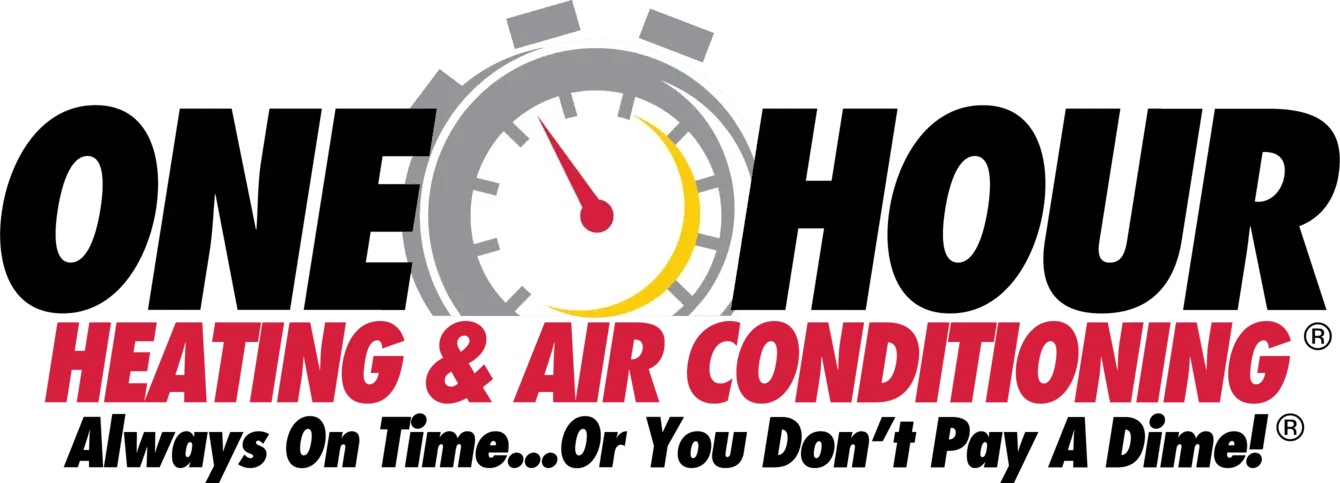Cost breakdown: repair vs replacement of older AC systems
When your air conditioning system starts breaking down, homeowners face a tough choice between spending money on repairs or investing in a completely new unit. This decision becomes even more challenging with older systems that may need frequent fixes but still have some life left in them.
For AC systems over 12 years old, replacement often provides better long-term value than continued repairs, especially when repair costs exceed 50% of a new unit's price. The math becomes clearer when homeowners understand the true costs involved and know how to calculate whether their aging system is worth saving.
Smart homeowners in West Valley need to consider several key factors beyond just the immediate repair quote, including their system's age, efficiency ratings, and how often breakdowns occur. In this article, you’ll learn how to evaluate AC repair vs replacement cost using realistic price ranges and decision rules for older systems.
- Here’s what you need to know.
- Understanding AC repair vs replacement cost
- Average AC repair cost for older systems
- Cost to replace AC unit in West Valley homes
- When to replace AC system instead of repairing
Keep reading! Understanding the average costs for both repairs and replacements helps property owners make informed decisions that protect their comfort and their wallets over the long term.
Understanding AC repair vs replacement cost
The cost to repair AC units varies widely based on the type of problem and system age. Meanwhile, the cost to replace AC unit depends on efficiency ratings, size requirements, and installation complexity.
Factors that affect the cost to repair AC
According to Forbes Home, the average AC repair cost is about $375, with most homeowners paying $125–$600 depending on the issue. These include replacing capacitors, cleaning clogged drains, or fixing thermostats.
More complex repairs can range from $500 to $2,000. Major component failures like compressor replacement or refrigerant line repairs fall into this category.
Common repair costs include:
- Capacitor replacement: $150-$400
- Thermostat issues: $200-$500
- Refrigerant recharge: $300-$800
- Compressor repair: $1,200-$2,500
The age of the system significantly impacts repair costs. Older units require more expensive parts that may be harder to find. Labor costs also increase when technicians need extra time to diagnose complex problems in aging systems.
Emergency repairs during peak summer months cost 20-50% more than standard service calls. Parts availability affects pricing, especially for discontinued models.
Key considerations in the cost to replace AC unit
New AC unit costs range from $3,000 to $8,000 including installation. Central air systems for average homes typically fall between $4,000 to $6,000.
Replacement costs depend on:
- Unit size and capacity: Larger homes need more powerful systems
- Efficiency ratings: High-efficiency models cost $1,000-$2,000 more
- Ductwork modifications: Additional $1,000-$3,000 if needed
- Installation complexity: Difficult access increases labor costs
Premium features like variable-speed compressors or smart thermostats add $500 to $1,500 to the total cost. However, these features often reduce long-term energy expenses.
Installation typically accounts for 30-40% of the total replacement cost. Professional installation ensures proper sizing and optimal performance.
How system age impacts long-term expenses
According to ENERGY STAR, if your air conditioner is more than 10 years old, replacing it with a properly installed ENERGY STAR–certified unit can save up to 20% on heating and cooling costs.
Systems older than 10 years face declining efficiency and increasing repair frequency. The 50% rule helps determine cost-effectiveness: replace when repair costs exceed half the price of a new unit.
Older systems consume 20-40% more energy than newer models. A 15-year-old AC unit costs significantly more to operate than current high-efficiency models.
Age-related cost factors:
- 5-10 years: Repairs usually cost-effective
- 10-15 years: Evaluate each repair carefully
- 15+ years: Replacement often makes financial sense
Frequent repairs indicate declining reliability. Systems requiring multiple service calls per year generate higher long-term costs than replacement.
Newer units come with warranties covering parts and labor for 5-10 years. This protection reduces unexpected expenses during the system's early years.
Average AC repair cost for older systems
Older air conditioning systems face higher repair costs due to worn components and harder-to-find parts. Labor expenses also increase as technicians spend more time diagnosing complex problems in aging units.
Common repairs and their price ranges
Older AC systems typically need several types of repairs throughout their lifespan. Compressor replacement ranks as the most expensive repair, costing between $1,500 and $2,500 for older units.
Refrigerant leaks become common in aging systems. Repairs range from $200 to $800, depending on the leak location and refrigerant type. Older units often use R-22 refrigerant, which costs more than newer alternatives.
Capacitor replacement costs between $120 and $400. These components fail frequently in older systems due to electrical stress over time.
Thermostat issues require $150 to $500 in repairs. Older mechanical thermostats often need complete replacement rather than simple fixes.
Ductwork problems cost $300 to $1,200 to repair. Aging ducts develop leaks, blockages, and insulation issues that reduce system efficiency.
Fan motor replacement ranges from $400 to $800. Motors in older units work harder due to worn bearings and increased resistance.
How labor and parts affect repair costs
Labor costs increase significantly for older AC systems. Technicians need extra time to diagnose problems in aging equipment. Complex issues require 3-4 hours instead of the typical 1-2 hours for newer systems.
Parts availability drives up costs for older units. Discontinued components must be special-ordered or refurbished. This adds 20-50% to standard part prices.
Accessibility issues in older installations increase labor time. Technicians face cramped spaces, outdated connections, and non-standard mounting systems. Emergency repairs cost even more, with after-hours fees adding $100-300 to the total bill.
Specialized tools may be needed for older system repairs. This equipment requirement increases the overall service cost by $50-150 per visit.
When repairs become more expensive than replacement
The 50% rule helps determine when replacement makes financial sense. If repair costs exceed half the price of a new system, replacement becomes the better choice.
Multiple repair needs often push costs beyond this threshold. A system needing both compressor and ductwork repairs can easily reach $3,000-4,000.
Frequent breakdowns create ongoing expense problems. Systems requiring repairs three or more times per year typically cost more to maintain than replace.
Emergency repairs during peak seasons carry premium pricing. These urgent fixes can cost 150-200% more than scheduled maintenance visits.
Cost to replace AC unit in West Valley homes
West Valley homeowners can expect to pay between $4,500 and $12,500 for central AC replacement in 2025. Installation costs vary based on home size, efficiency ratings, and specific equipment needs for Arizona's desert climate.
Installation costs and what's included
Central AC replacement in West Valley typically ranges from $6,500 to $12,500 for most homes. This price includes the outdoor condenser unit, indoor evaporator coil, and professional installation.
Labor costs make up about 30-40% of the total project cost. Installation teams handle refrigerant lines, electrical connections, and system testing. Most contractors include permits and basic warranty coverage in their pricing.
Standard installation includes:
- Equipment delivery and setup
- Electrical connections and wiring
- Refrigerant line installation
- System commissioning and testing
- Basic warranty (typically 1-5 years)
Additional costs may apply for ductwork modifications, electrical panel upgrades, or complex installations. Homes with existing ductwork in good condition keep costs lower. Properties requiring new electrical circuits or structural modifications can add $1,000 to $3,000 to the project.
Energy efficiency and long-term savings
High-efficiency AC units cost more upfront but provide significant savings in West Valley's hot climate. Standard SEER2 14 units start around $4,500, while SEER2 18+ models range from $7,000 to $10,000.
Arizona's extreme summer temperatures make efficiency ratings crucial for operating costs. A SEER2 18 unit can reduce cooling bills by 25-35% compared to older 10 SEER systems.
Annual savings by efficiency level:
- SEER2 16: $200-400 savings
- SEER2 18: $400-600 savings
- SEER2 20+: $500-800 savings
West Valley residents often recover the higher equipment cost within 5-7 years through energy savings. Arizona Public Service offers rebates up to $1,200 for qualifying high-efficiency systems.
Comparing replacement options for different home sizes
Home size directly impacts AC replacement costs in West Valley. Smaller homes under 1,200 square feet typically need 2-ton systems costing $4,500 to $7,000. Medium homes (1,200-2,000 sq ft) require 3-ton units ranging from $6,000 to $9,000.
Large homes over 2,500 square feet often need 4-5 ton systems or dual units. These installations cost $8,000 to $12,500 depending on layout complexity.
|
Home Size |
AC Size Needed |
Cost Range |
|
Under 1,200 sq ft |
2-2.5 ton |
$4,500-$7,000 |
|
1,200-2,000 sq ft |
3-3.5 ton |
$6,000-$9,000 |
|
2,000-2,500 sq ft |
4-4.5 ton |
$7,500-$10,500 |
|
Over 2,500 sq ft |
5+ ton or dual units |
$8,000-$12,500 |
Two-story homes may benefit from dual-zone systems despite higher costs. Single large units can struggle with uneven cooling in multi-level West Valley properties.
When to replace AC system instead of repairing
Certain situations make replacement the smarter financial choice over continued repairs. Age, declining efficiency, and frequent breakdowns often signal when a system has reached the end of its useful life.
Signs your AC is beyond repair
Multiple major component failures within a short timeframe indicate a system nearing complete breakdown. When the compressor, condenser, and evaporator coil all need attention simultaneously, replacement costs often exceed repair expenses.
Refrigerant leaks in older systems present particular challenges. Units using R-22 refrigerant face expensive repairs since this coolant is being phased out. The refrigerant alone can cost $100-150 per pound.
Electrical issues throughout the system create safety concerns and ongoing expenses. Frequent circuit breaker trips, burning smells, or sparking components require immediate attention and often indicate widespread problems.
The $5,000 rule provides a quick assessment tool. Homeowners multiply their unit's age by the repair cost estimate. Results exceeding $5,000 suggest replacement offers better value.
Ductwork problems combined with AC issues compound repair costs significantly. Extensive duct modifications or replacements alongside system repairs often justify complete system upgrades instead.
Efficiency ratings and performance decline
Systems with SEER ratings below 10 consume significantly more energy than modern units. Current standards require minimum SEER 14-15 ratings, while high-efficiency models reach SEER 20 or higher.
Energy bill increases of 25-50% compared to previous years indicate declining efficiency. Older systems work harder to achieve the same cooling results, driving up monthly costs substantially.
Uneven cooling throughout the home suggests the system cannot maintain consistent temperatures. Rooms staying warm despite continuous operation indicate reduced capacity and efficiency.
Extended runtime without reaching desired temperatures shows the system struggles with basic functions. Units running constantly increase wear and energy consumption while failing to provide adequate comfort.
Modern systems offer variable-speed technology and smart controls unavailable in older models. These features provide better temperature control and energy savings that older systems cannot match.
Evaluating lifespan vs repair frequency
Well-maintained systems typically last 15-20 years with proper care. Units approaching or exceeding this timeframe face increased failure rates and component availability issues.
Repair frequency becomes problematic when service calls occur multiple times per year. Systems requiring professional attention every few months indicate underlying reliability issues that will continue.
Component availability decreases as systems age beyond 15 years. Manufacturers discontinue parts for older models, making repairs more expensive and time-consuming when parts require special ordering.
Warranty coverage on repairs becomes less valuable for older systems. New equipment includes comprehensive warranties covering parts and labor, while older system repairs often carry limited guarantees.
Future repair costs tend to escalate as systems age. Components that have not yet failed will likely need attention soon, creating a cycle of ongoing maintenance expenses.
Conclusion
The repair versus replacement decision requires careful analysis of multiple cost factors. Homeowners must weigh immediate expenses against long-term financial benefits.
Simple repairs like capacitor fixes or thermostat replacements cost much less than full replacement. However, older systems often justify the investment in new equipment through better efficiency and reliability.
The 5,000 rule provides helpful guidance: multiply the system's age by repair cost. If the result exceeds $5,000, replacement typically offers better value.
Energy savings from newer systems can offset replacement costs over time. Modern units use significantly less electricity than systems over 10 years old.
Replacement often delivers superior long-term value despite higher initial costs. New systems provide improved comfort, fewer breakdowns, and comprehensive warranty coverage.
The decision depends on each homeowner's specific situation and financial goals. Systems requiring frequent expensive repairs usually benefit from replacement. Well-maintained units with minor issues may warrant continued repairs.
Professional evaluation helps determine the most cost-effective approach. HVAC technicians can assess system condition and provide accurate repair estimates for informed decision-making.
Schedule a professional AC assessment today to compare repair estimates vs full replacement costs and get a precise quote for your home.
Frequently Asked Questions
What is the average AC repair cost?
Typical AC repairs range from $125–$600 for common issues, while major components (like compressors) can exceed $1,500.
How much does it cost to replace an AC unit?
Most whole-home replacements fall between $4,500–$12,500 depending on tonnage, SEER2 rating, ductwork needs, and installation complexity.
How do I decide between AC repair vs replacement cost?
Use two quick checks: the 50% rule (replace if a repair exceeds 50% of a new unit’s price) and the $5,000 rule (age × repair cost; if over $5,000, consider replacement).
When should I replace my AC system instead of repairing it?
Replacement is often wiser if the unit is 10–15+ years old, requires frequent major repairs, has a low SEER rating, or no longer cools effectively despite proper maintenance.
Do higher-efficiency units reduce long-term costs?
Yes. Newer high-efficiency systems lower monthly bills and typically include longer warranties, which can offset higher upfront costs over time.















